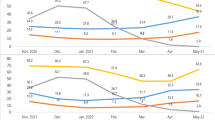Abstract
Scald, caused by Rhyncosporium commune, is a common foliar disease of barley in south eastern Australia, causing significant damage during cool, wet seasonal conditions. In this study, scald caused up to 30% (1.4 t/ha) grain yield loss, reduced grain plumpness and weight by up to 25% and 20% respectively and increased screenings by up to 6%. Seed, fertiliser and foliar applied fungicides reduced scald severity and provided improvements in both grain yield and quality. Dual foliar fungicide application of propiconazole at early stem elongation (Z31) and flag leaf emergence (Z39) was most effective in controlling scald and reducing grain yield and quality losses. The seed applied fungicide, fluxapyroxad was the most effective single application fungicide treatment. Varieties with host-plant resistance had less grain yield and quality loss than the very susceptible rated variety, however, these varied between seasons. This study demonstrated that an integrated disease management strategy is required for scald in barley that includes growing resistant varieties and timely fungicide applications.
Similar content being viewed by others
References
Ayesu-Offei EN, Carter MV (1971) Epidemiology of leaf scald of barley. Australian Journal of Agriculture Research 22:383–390
Cheong J, Williams K, Wallwork H (2006) The identification of QTLs for adult plant resistance to leaf scald in barley. Aust J Agric Res 57:961–965
Davis H, Fitt BDL (1994) Effects of temperature and leaf wetness on the latent period of Rhynchosporium secalis (leaf blotch) on leaves of winter barley. J Phytopathol 140:269–279
Fountaine JM, Shaw MW, Ward E, Fraaije BA (2010) The role of seeds and airborne inoculum in the initiation of leaf blotch (Rhynchosporium secalis) epidemics in winter barley. Plant Pathol 59:330–337
Garvin DF, Brown AHD, Raman H, Read BJ (2000) Genetic mapping of the barley Rrs14 scald resistance gene with RFLP, isozyme and seed storage protein markers. Plant Breed 119:193–196
Hollaway GJ, McLean MS (2014) Victorian Cereal Disease Guide. Department of Environment and Primary Industries, AgNotes
Kavak H (2004) Effects of different sowing times on leaf scald and yield components of spring barley under dryland conditions. Australian Journal of Agriculture Research 55:147–153
Khan TN, D’Antuono MF (1985) Relationship between scald (Rhynchosporium secalis) and losses in grain yield of barley in Western Australia. Aust J Agric Res 36:655–661
Khan TN (1986) Effects of fungicide treatments on scald (Rhynchosporium secalis (Oud.) J. Davis) infection and yield of barley in Western Australia. Aust J Exp Agric 26:231–235
Khan TN, Crosbie GB (1988) Effect of scald (Rhynchosporium secalis (Oud.) J. Davis) infection on some quality characteristics of barley. Aust J Exp Agric 28:783–785
Long NR, Jefferies SP, Warner P, Karakousis A, Kretschmer JM, Hunt C, Lim P, Eckermann PJ, Barr AR (2003) Mapping and QTL analysis of the barley population Mundah × Keel. Aust J Agric Res 54(1163):1171
McLean MS, Howlett BJ, Hollaway GJ (2010) Spot form of net blotch, caused by Pyrenophora teres f. maculata, is the most prevalent foliar disease of barley in Victoria, Australia. Australas Plant Pathol 39:46–49
Murray, Brennan (2010) Estimating disease losses to the Australian barley industry. Australas Plant Pathol 35:85–96
Poole NF, Arnaudin ME (2014) The role of fungicides for effective disease management in cereal crops. Can J Plant Pathol 36:1–11
Scott DB, Niekerk HA, Paxton TG (1992) Effect of propiconazole on necrotrophic fungi and yield of barley genotypes differing in susceptibility to Rhynchosporium secalis. Crop Prot 11:243–247
Turkington TK, O’Donovan JT, Harker KN, Xi K, Blackshaw RE, Johnson EN, Peng G, Kutcher HR, May WE, Lafond GP, Mohr RM, Irvine RB, Stevenson C (2015) The impact of fungicide and herbicide timing on foliar disease severity, and barley productivity and quality. Canadian Journal of Plant Sciences 95:525–537
Wallwork H, Grcic M, Li CD, Hayden MJ, Chalmers K, Mather DE (2014) Use of specific differential isolates of Rhynchosporium commune to detect minor gene resistance to leaf scald in barley seedlings. Australas Plant Pathol 43:197–203
Zadoks JC, Chang TT, Konzak CF (1974) A decimal code for the growth stages of cereals. Weed Res 14:415–421
Zhan J, Fitt BDL, Pinnschmidt HO, Oxley SPJ, Newton AC (2008) Resistance, epidemiology and sustainable management of Rhynchosporium secalis populations on barley. Plant Pathol 57:1–14. https://doi.org/10.1111/j.1365-3059.2007.01691.x/abstract
Acknowledgements
The authors thank the Grains Development and Research Corporation and Agriculture Victoria (Department of Economic Development, Jobs, Transport and Resources) for investment and support. We also thank the Horsham Field Crops Pathology Team’s technical staff for support and Kevin Pymer for providing land at Wonwondah for field experiments. Dr. Trevor Bretag for comments on this manuscript. BASF for supplying Systiva® (fluxapyroxad).
Author information
Authors and Affiliations
Corresponding author
Rights and permissions
About this article
Cite this article
McLean, M.S., Hollaway, G.J. Suppression of scald and improvements in grain yield and quality of barley in response to fungicides and host-plant resistance. Australasian Plant Pathol. 47, 13–21 (2018). https://doi.org/10.1007/s13313-017-0529-5
Received:
Accepted:
Published:
Issue Date:
DOI: https://doi.org/10.1007/s13313-017-0529-5




